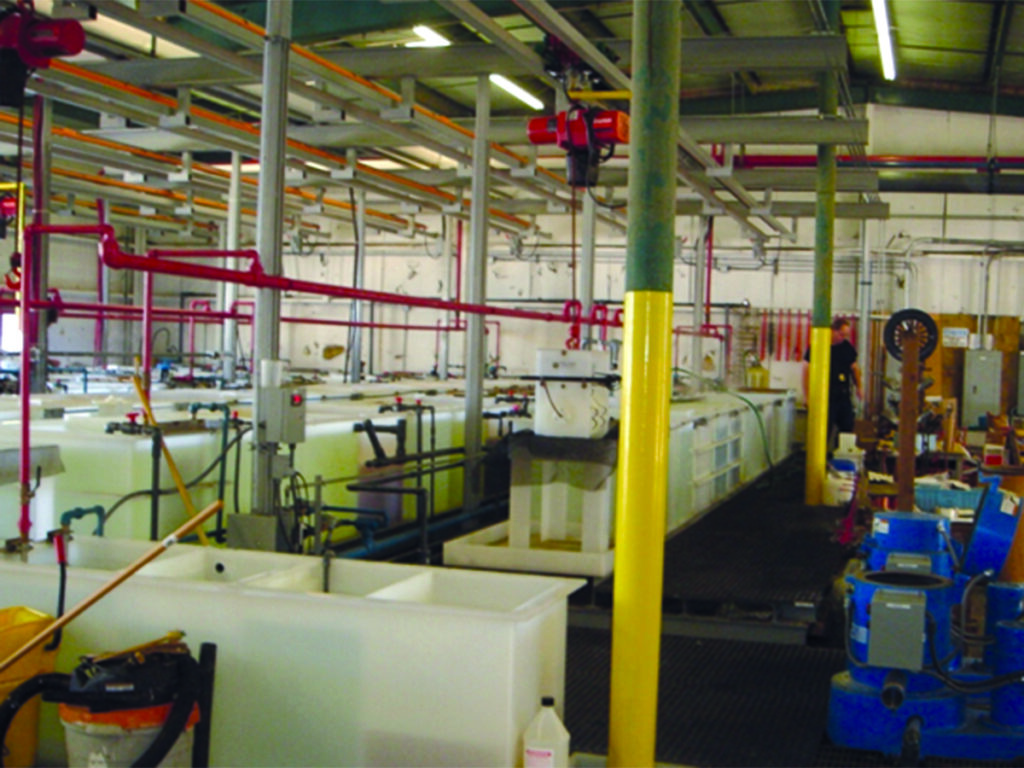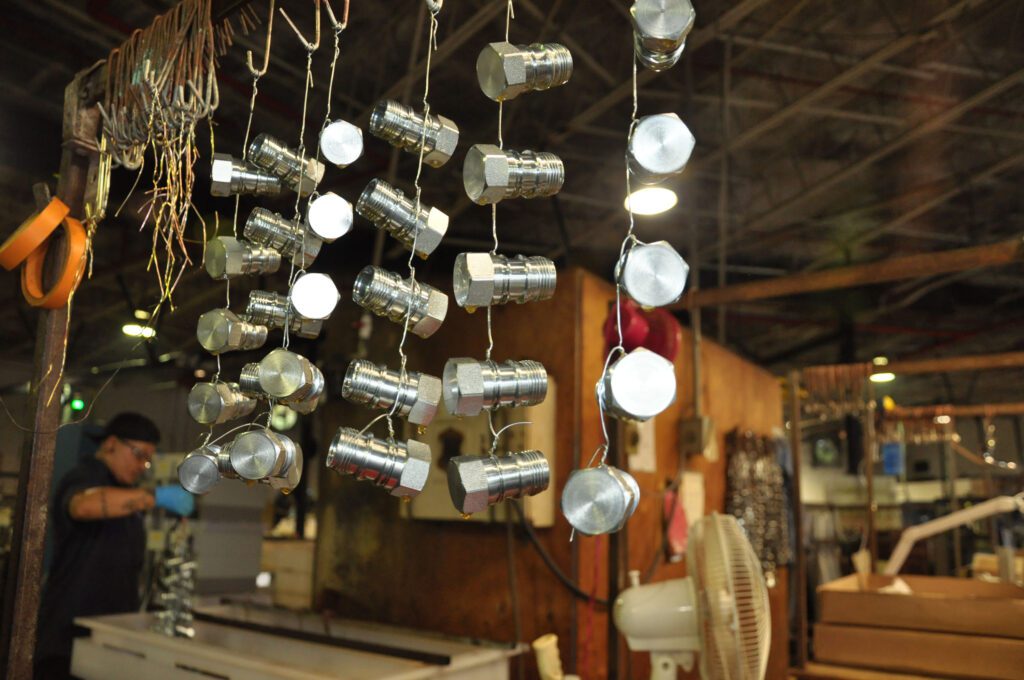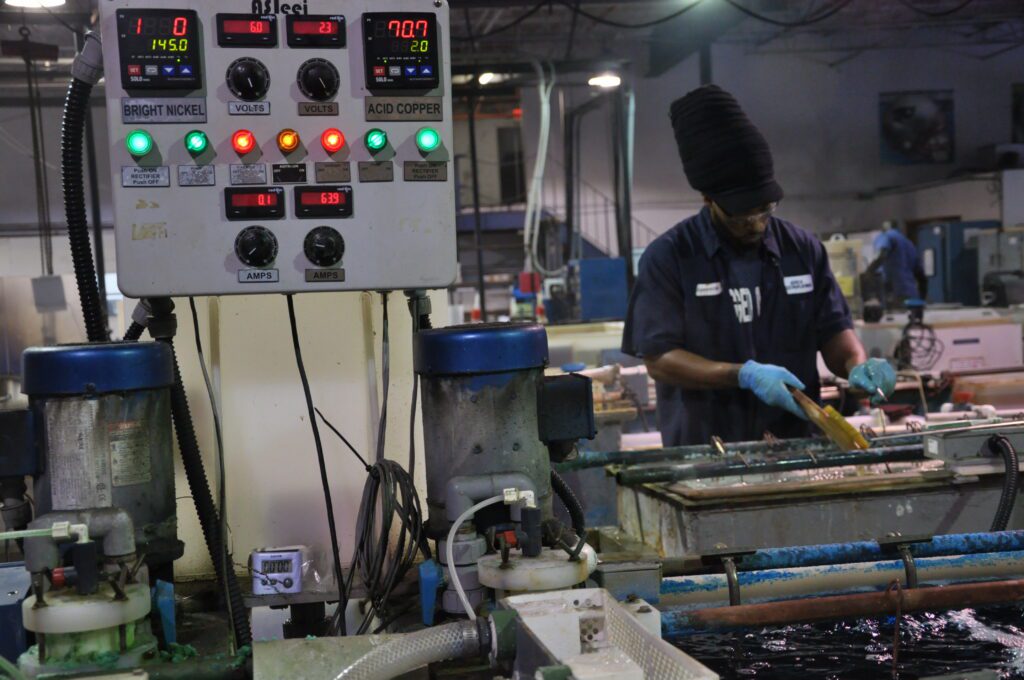Guide To Electroplating Waste Management
This resource has been developed by Pinellas County Solid Waste to provide businesses with guidance on how to properly manage wastes in accordance with federal, state and local laws.
Electroplating wastes are potentially hazardous to human health and the environment when they are improperly managed. Several hazardous wastes are commonly generated by the electroplating industry.
Your wastes are hazardous if one of the following applies to you:
- The flashpoint of your spent cleaning solvent, lacquer, or other waste is less than 140°F.
- Your spent cleaning solution or degreaser contains solvents on the F-list.*
- Sludge from the bottom of process and wastewater treatment tanks is on the F-list.*
- The pH of your spent cleaning solution is (less than or equal to 2 OR greater than or equal to 12.5) unless it is used for pH adjustment in your wastewater treatment plant.
- Spent plating and cleaning solutions contain metals or organic chemicals.
*The F-listed hazardous wastes can be found on the EPA’s website.
Managing Regulated Wastes Generated at Electroplating Facilities
Visit floridadep.gov/waste/permitting-compliance-assistance/content/hazardous-waste-management for information on hazardous waste disposal and recycling.
| Waste Type | Source | Disposal Options |
| Filters/Sludges/Tank Bottoms | • Plating • Wastewater Treatment Process | Manage as hazardous waste |
| Solvent-Contaminated Wipes | • Cleaning/Surface Preparation | 1. Manage under solvent-contaminated wipe exclusion 2. Manage as hazardous waste |
| Spent Acid/Alkaline Solution | • Cleaning/Surface Preparation • Plating | 1. Wastewater pre-treatment prior to disposal to sewer 2. Manage as hazardous waste |
| Spent Anode Bags | • Plating | 1. Clean and reuse 2. Manage as hazardous waste |
| Spent Bath Solutions | • Cleaning • Etching • Plating • Stripping | 1. Reuse within one year *Must be able to demonstrate reuse within one year 2. Wastewater pre-treatment prior to disposal to sewer 3. Manage as hazardous waste |
| Spent Lead Anodes | • Plating | 1. Reclaim through metal recycler 2. Manage as hazardous waste |
| Spent Membrane Filters and Resins | • Plating | 1. Manage as hazardous waste |
| Spent Solvents | • Cleaning/Surface Preparation | 1. Reclaim via a solvent recycler 2. Manage as hazardous waste |
| Universal Wastes • Lamps • Thermostats • Water-bath thermometers • Batteries | • Facility and Equipment Management | 1. Recycle via universal waste destination facility 2. Manage as hazardous waste |
| Waste Paints | Surface Coating | 1. Manage as hazardous waste |
| Waste Rinse Waters | Plating | 1. Wastewater pre-treatment prior to disposal to sewer 2. Manage as hazardous waste |
Compliance Tips
Written documentation of recycling or disposal is required.
- If you opt to use a solvent recovery unit, maintain a solvent recovery log to ensure proper tracking of your waste generation.
- Pinellas County and its municipalities have limitations on concentrations of pollutants, such as metals, discharged to the sewer system. There are also pH limitations. For example, Pinellas County’s permissible pH range is 5.5 to 11.0. Some municipalities may be more or less stringent. Refer to www.municode.com to verify your wastewater discharge limits.
Best Management Practices
Reducing hazardous wastes in your shop makes good business sense. Some benefits to managing hazardous wastes properly include:
- Saving money on waste management costs.
- Reducing concerns about penalties and liability.
- Creating a safer, healthier workplace.
- Promoting positive public relations with clients, customers, and the local community.
How Do I Begin?
- Make a commitment to reducing wastes in every area of your business.
- Evaluate your facility’s wastes and identify areas where changes can be made.
- Encourage the participation of all employees through education, training and incentives.
Cleaning and Surface Preparation Tips
- Use abrasives instead of aqueous cleaners or solvents.
- Use non-chelated cleaning chemicals and mild chelators.
- Reuse or recycle cleaning agents.
- Reuse or recycle rinse water.
- Use countercurrent or cascade cleaning systems.
How to Reduce Dragout
- Allow for drain time over the bath. An additional 2 to 3 seconds of drain time can reduce dragout by 50 percent.
- Install spray rinses. Rinsing conducted over heated baths washes dragout directly into the plating bath and uses a minimal amount of water.
- Position parts to keep dragout at a minimum. Tilt parts so that liquid drains freely as the parts are removed from the baths. Orient parts so that the smallest surface area is in contact with the solution as a part is removed.
- Install drain boards between process and rinse tanks.
How to Reduce Water Use
- Use conductivity control systems, which can reduce water use and wastewater generation. Conductivity control systems monitor rinse water conductivity to maintain adequate chemical concentrations and reduce water use by adding rinse water to rinse tanks only when necessary.
- Use low-cost flow restrictors or solenoid valves and timers to reduce water use and wastewater generation. Solenoid valves can be installed with spring-wound timers on rinse water lines to control flow to each of the rinse tanks.
- Use counter-current rinsing to reduce water use and wastewater generation.
Extend Bath Life
- Improve bath purity by using deionized water for bath makeup and filtering the bath continuously.
- Maintain each bath by measuring its pH, temperature, and concentration daily. Add chemicals only when needed.
- Use bath additives, which can replenish process chemicals and add chemical agents to boost bath performance.
- Remove impurities in the process tank through membrane filters, ultrafiltration, and ion exchange.
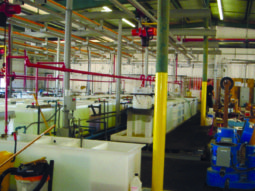
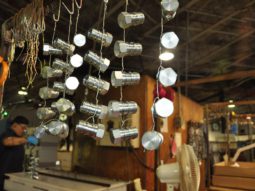

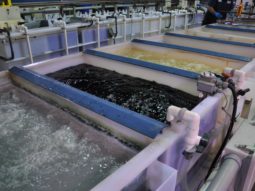

*See table above for waste management practices
Additional Resources
- Where Does It Go? Search Tool
- Recycle Guide & Downloadable Signage
- Household Chemical Collection
- Collection: Garbage & Recycling
- Hours: Solid Waste Disposal Complex
- Disposal Fee Information
- Educational Resources: Garbage and Recycling
- Recycling FAQ
- Map of Recycling Drop-Off Centers
- Artificial Reef Program
- Mulch Pickup Program
- For Businesses: Garbage & Recycling Resources
- How Mixed Recycling Works In Pinellas County
- Video Library: Garbage and Recycling
- Holiday and Gift-Giving Guide
- Pinellas Partners in Recycling
- Waste-to-Energy Facility
- Bridgeway Acres Landfill
- Solid Waste Master Plan
- Solid Waste Disposal Accounts
- Lealman Garbage and Recycling Collection
- Tampa Bay Recycles
- Why Recycling Is Important
- Discover Careers with Pinellas County Solid Waste
Contact Us
For more information or to request a printed copy of this guide, contact the Pinellas County Small Quantity Generator Program at (727) 464-7500 or bwa@pinellas.gov.
Updated on April 8, 2024.
